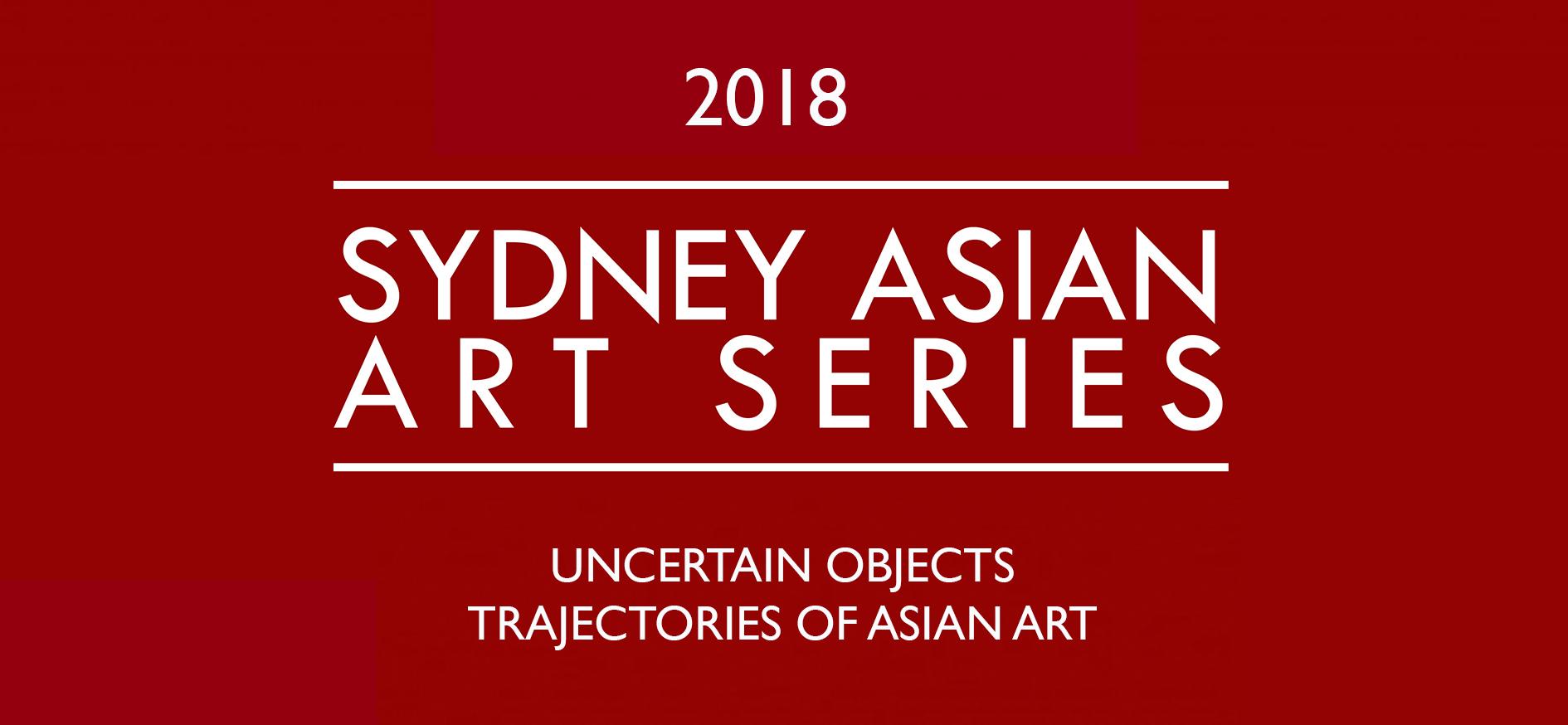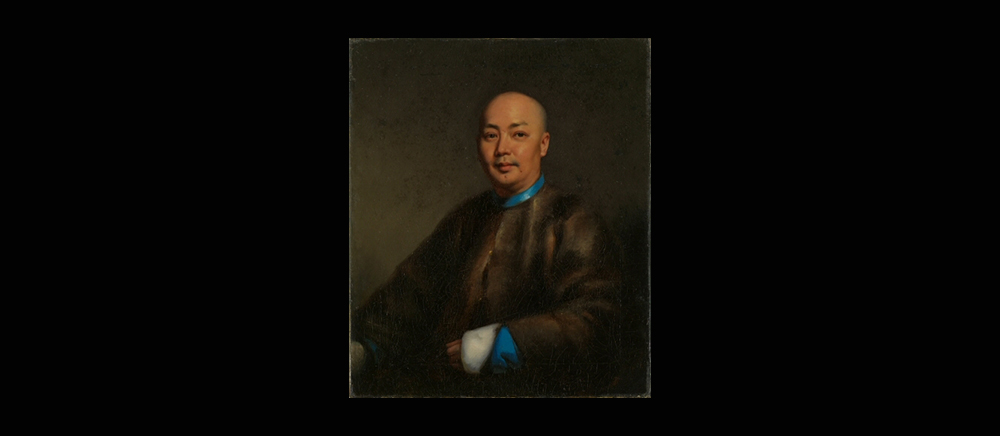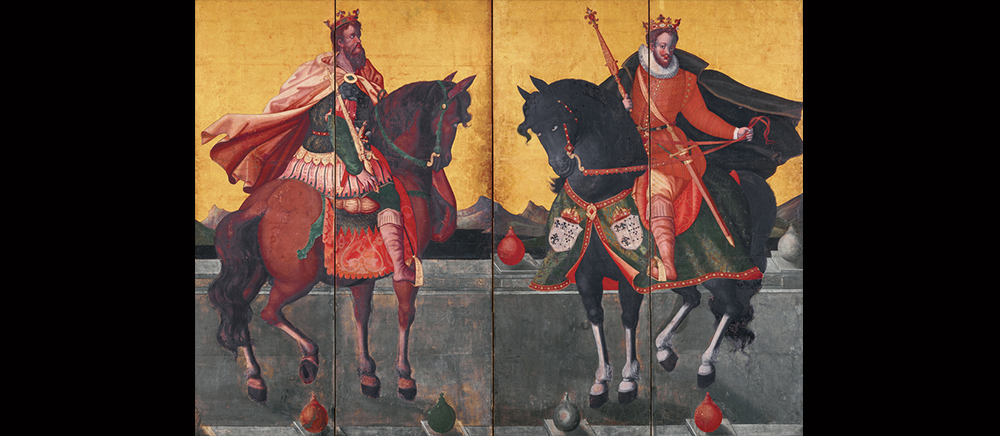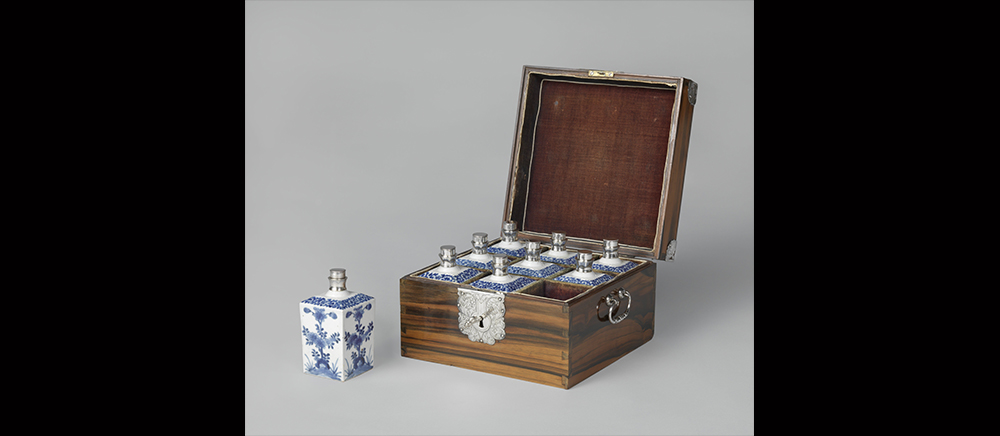Sydney Asian Art Series 2018

Each year, the Sydney Asian Art Series gathers leading international voices on critical issues in early, modern and contemporary Asian art.
The 2018 series tracked the theme “Uncertain Objects: Trajectories of Asian Art.”
Convened by Olivier Krischer, and co-presented by the Power Institute, the China Studies Centre and VisAsia at the Art Gallery of NSW
We often think of artists and artworks as having stable identities: produced by a named artist, in a particular place, for a particular patron or market. These beliefs then shape what we think we know, or could know, about objects, their subjects and creators. Yet the historical reality of art is far messier, and far more exciting; objects, artists, and ideas moved across national and cultural boundaries, created between and from multiple cultures. The 2018 Sydney Asian Art Series, Uncertain Objects: Trajectories of Asian Art explored examples of such movement and multiplicity from across Asia and the world.
In semester one Professor Winnie Wong questioned the legacy of “Lam Qua,” one of the most well-documented artisans working in the port of Guangzhou in the early 19th century. Was he an early exemplar of modern art in China, or a mere copyist of European pictures? In her lecture Until You See the Original Again: Lam Qua, Chinese Export Artist, professor Wong explores the fascinating corpus of paintings—including both originals and copies- left by the Lam Qua.
Professor Ajay Sinha addressed the 2018 theme with his lecture Transcultural Attractions: Photographs of an Indian Dancer. In the Spring of 1938, an Indian dancer, Ram Gopal, posed in a variety of fantastical costumes for the American photographer, Carl Van Vechten, in New York City. Sinha’s lecture will discuss the resulting series of 100 remarkable, large-size photographs, to build an illustrated story of mutual fascination and transcultural exchanges triggered by the camera placed between the dancer and the photographer during the photoshoot.
The program for Semester Two began with Professor Timon Screech’s lecture, The Shogun’s Silver Telescope: Art in the First English Encounters with Japan, 1611-1616. In 1611, the East India Company in London planned a voyage to Japan, hoping finally to read that rich and fabled land. An appropriate gift was selected for the Japanese ruler, and when one of the ships duly arrived in 1613, Tokugawa Ieyasu was presented with a large, silver-gilt telescope, in the name of King James. It was the first telescope ever to leave Europe and the first built as a presentation object. Before news of this success was reported home, the English sent another ship, this time loaded with oil painting and prints. Screech’s talk will investigate the reasons for the Company’s interest in Japan, for the selection of these unexpected items, and for their impact in Japan.
On 18 October, Professor Nancy Um joined us for the fourth and final talk of the year with her lecture entitled Boxes Fit for Kings: Aromatic Gifts around the Late-Seventeenth- and Early-Eighteenth-Century Indian Ocean. Gilded glass bottles blown in India and porcelain flasks produced in Japan circulated around the Indian Ocean, filled with aromatic oils and packaged in custom-made boxes. These fragrant items were doled out as gifts by the Dutch East India Company, distributed to gain commercial leverage with high-profile recipients across an arena that stretched from the mountains of Ethiopia to the Qing Emperor’s court. This lecture follows these intriguing items from their diverse places of manufacture to their points of distribution and demonstrates their strategic power as bestowals.
Events
Past

Until You See the Original Again: Lam Qua, Chinese Export Artist
The Chinese painter known to Europeans as “Lam Qua” was one of the most well-documented artisans working in the port of Guangzhou in the early 19th century. A practitioner of studio portraiture who painted many Europeans and Americans in oil on canvas, he has been portrayed variously as a mere servant to the British painter George Chinnery, a cool operator of an international port market, or a precocious appropriator of European artistic techniques and styles.
People
Winnie Wong
Winnie Wong is a historian of modern and contemporary art and visual culture, with a special interest in fakes, forgeries, frauds, copies, counterfeits, and other non-art challenges to authorship and originality. Her research is based in the southern Chinese cities of Hong Kong, Guangzhou and Shenzhen, and her writing engages with Chinese and Western aesthetics, anthropology, intellectual property law, and popular culture. She is the author of Van Gogh on Demand: China and the Readymade (University of Chicago Press, 2014), which was awarded the Joseph Levenson Book Prize in 2015. Her articles have appeared in positions: asia critiques, the Journal of Visual Culture, Yishu: Journal of Contemporary Chinese Art, and she has written for Omagiu, Third Text Asia, and Artforum. Winnie was a Senior Fellow at Dartmouth College, and received her SMArchS and PhD in History, Theory and Criticism from MIT. She was elected a Junior Fellow of the Harvard Society of Fellows. She is currently associate professor of Rhetoric and History of Art at the University of California, Berkeley.

Transcultural Attractions: Photographs of an Indian Dancer
A lecture about the transcultural exchanges between an Indian dancer and an United States photographer.
People
Ajay Sinha
Ajay Sinha is Professor of Art History, Asian Studies, and Film Studies programs at Mount Holyoke College, U.S.A. As a specialist of South Asian visual and material culture, his research areas include the history of ancient religious architecture, as well as modern and contemporary art, photography and film in India. His scholarship and teaching are informed by post-colonial theories, perspectives on global modernities, as well as critical media and technology studies. Publications include Imagining Architects: Creativity in Indian Temple Architecture (2000), and a volume of essays on Indian film, co-edited with Raminder Kaur, titled Bollyworld: Popular Indian Cinema through a Transnational Lens (2005). His current, book-length work relates to transcultural photography, and tells a story of interactions between the cultural worlds of India and the U.S.A. documented in a set of over 100 photographs of an Indian dancer, Ram Gopal, who posed for an American photographer, Carl Van Vechten, in New York City in 1938.

The Shogun’s Silver Telescope: Art in the First English Encounters with Japan, 1611-1616
In 1611, the East India Company in London planned a voyage to Japan, hoping finally to read that rich and fabled land. An appropriate gift was selected for the Japanese ruler, and when one of the ships duly arrived in 1613, Tokugawa Ieyasu was presented with a large, silver-gilt telescope, in the name of King James. It was the first telescope ever to leave Europe and the first built as a presentation object. Before news of this success was reported home, the English sent another ship, this time loaded with oil paintings and prints.
People
Timon Screech
Timon Screech is a professor of the history of art at the School of Oriental and African Studies (SOAS), University of London. He is a specialist in the art and culture of early modern Japan. In 1985, Timon Screech received a BA in Oriental Studies (Japanese) at the University of Oxford. In 1991, he completed his PhD in art history at Harvard University, since which he has been at SOAS; and he has also been visiting professor at the Universities of Chicago and Heidelberg, and guest researcher at Gakushuin and Waseda universities in Tokyo. He had recently completed a book on the early history of the English East India Company, and its first sailings to Japan (1613–26), and is now writing the Oxford History of Japanese Art.

Boxes Fit for Kings: Aromatic Gifts around the Late-Seventeenth- and Early-Eighteenth-Century Indian Ocean
Gilded glass bottles blown in India and porcelain flasks produced in Japan circulated around the Indian Ocean, filled with aromatic oils and packaged in custom-made boxes. These fragrant items were doled out as gifts by the Dutch East India Company, distributed to gain commercial leverage with high-profile recipients across an arena that stretched from the mountains of Ethiopia to the Qing Emperor’s court.
People
Nancy Um
Nancy Um is professor in the department of art history at Binghamton University. She received her PhD in art history from UCLA in 2001. Her research explores the Islamic world from the perspective of the coast, with a focus on material, visual, and built culture on the Arabian Peninsula and around the rims of the Red Sea and Indian Ocean. Her book The Merchant Houses of Mocha: Trade and Architecture in an Indian Ocean Port(University of Washington Press, 2009) relies upon a cross-section of visual, architectural, and textual sources to present the early modern coastal city of Mocha as a space that was nested within wider world networks, structured to communicate with far-flung ports and cities across a vast matrix of exchange. Her recent book, Shipped but not Sold: Material Culture and the Social Order of Trade during Yemen’s Age of Coffee(University of Hawai’i Press, 2017), explores the material practices and informal social protocols that undergirded the overseas trade in 18thC Yemen. Her articles have appeared in the Journal of the Society of Architectural Historians, African Arts, Northeast African Studies, Journal of Early Modern History, Genre: Forms of Discourse and Culture, Art History, and Getty Research Journal. She has received research fellowships from the Fulbright program, the National Endowment for the Humanities, the Getty Foundation, and the American Institute for Yemeni Studies.



